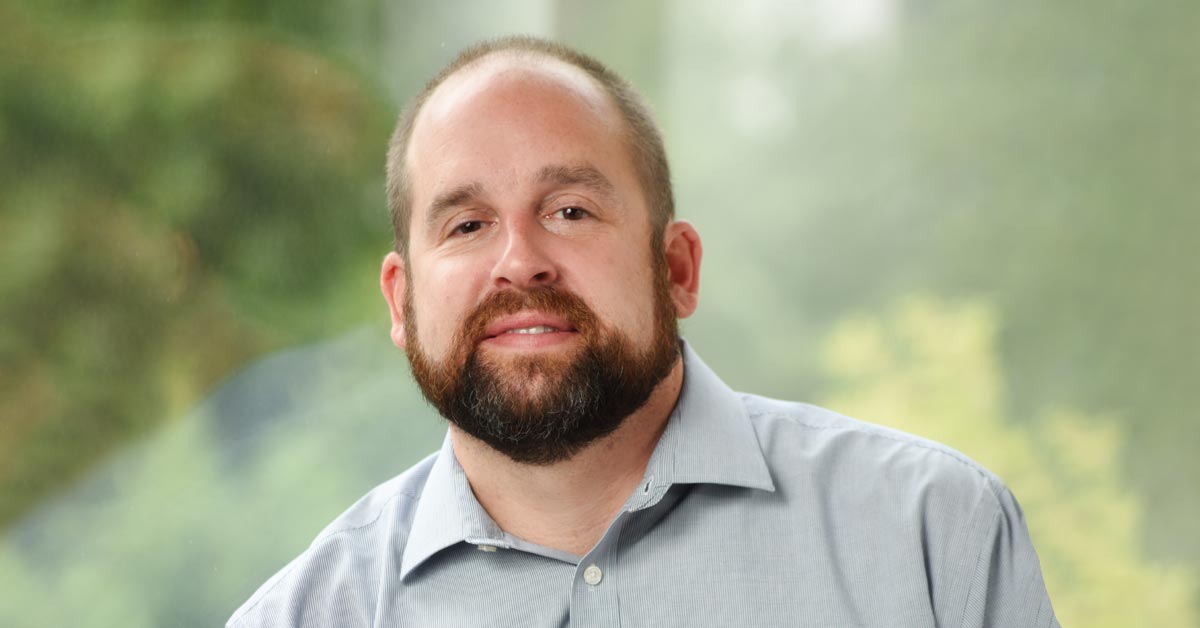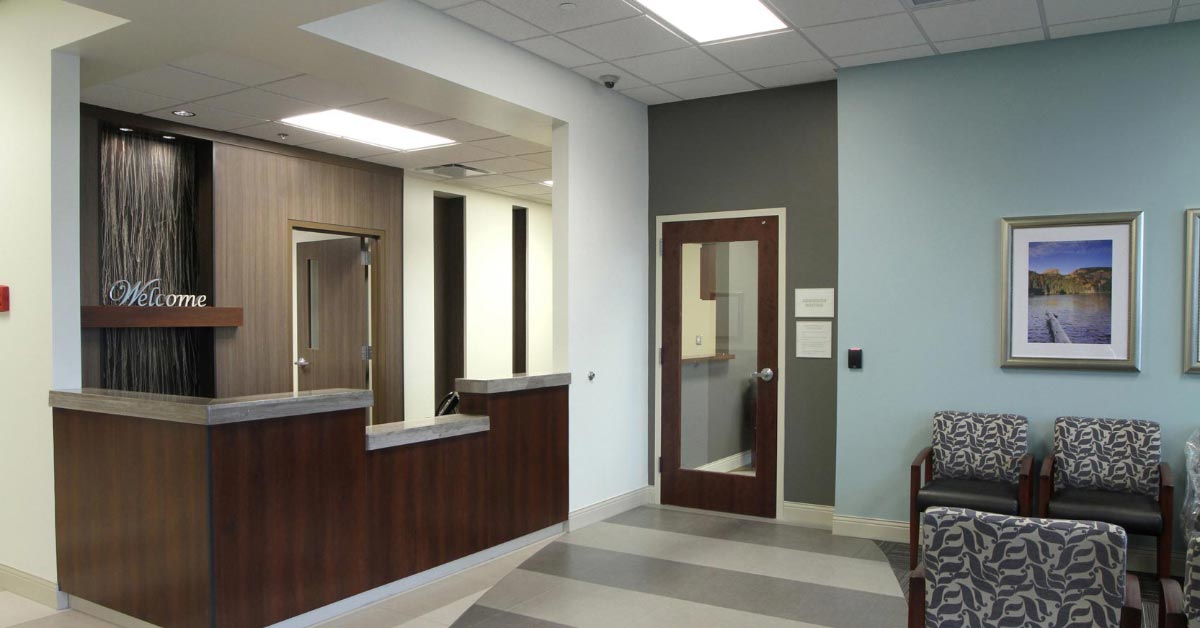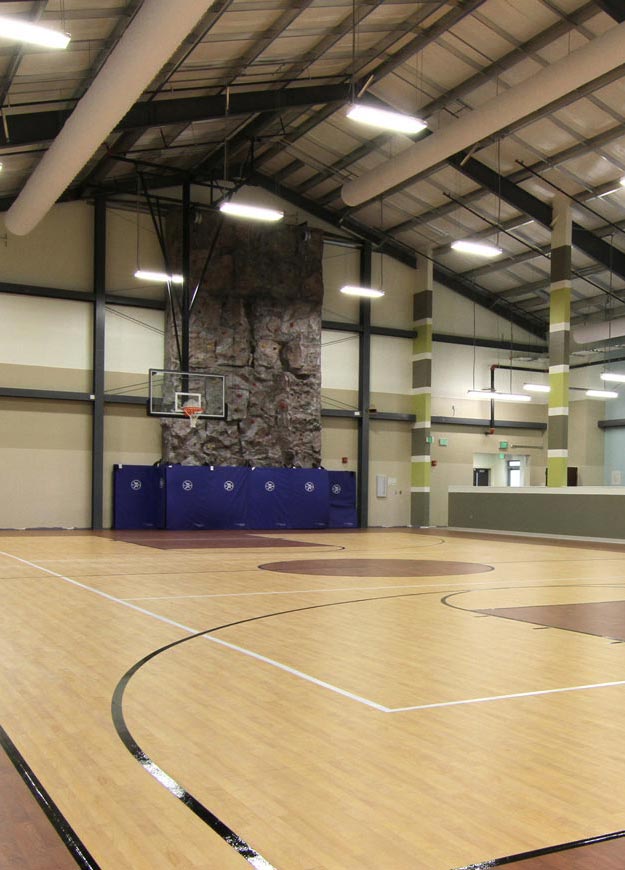
Mark L. Spies and his firm, Stengel Hill Architecture (SHA), where he is a principal, have made a name for themselves in the healthcare arena.
In his 20+ years of working at SHA, Mark has had the opportunity to work on many behavioral healthcare facilities. As Mark puts it, “[his] brain is wired” for this kind of work.
Spies kindly gave us the benefit of that wiring and spent some time with us so we could share what we learned with you. We covered the role architecture and design play in mental health and the positive impact the work has on patients, staff, and those doing this critical design work. Mark talked about the challenges of working within a mental healthcare system that is desperately needed, yet tragically underfunded. He also shared the importance of flexible design and why post-occupational surveys are crucial.
We show them the renderings of what the space is going to look like, and they are just blown away. It’s often better than what they would have asked for.
Tangible Results
As a father himself, Mark holds a lot of empathy for youth in behavioral healthcare spaces, knowing that adverse events often contribute to youths’ need for psychiatric help.
“You know, they are scared, and they need help,” said Spies. “If we can make these spaces just a bit nicer for them and provide them a safe environment to get the care they need, well, I feel blessed to be able to do something that has an impact. That’s what gets me excited about this work.” Spies knows that his involvement in designing the care space is unlikely to be the deciding factor that helps a patient successfully get well, but he’s genuinely proud of his impact. “We’re designing something that helps people. I understand we’re not saving the world or anything like that, but I can see tangible results coming out of the work we do,” said Spies.
Some of the youths he’s worked with have made Spies see the impact of his work in a direct and affecting manner. He spoke of his experience with a focus group [his firm] ran, which included some current patients of an adolescent unit renovation. He said that one of the teens had to leave the focus group early to attend a funeral for a friend who committed suicide. However, before leaving the call, she expressed that she wished her friend could have been involved in the focus group or experienced a space like the one they were discussing. She thought that perhaps it could have saved her friend’s life.
“It was incredibly gut-wrenching and made me stop for a moment. I’ll never forget it. I realized this isn’t just my job. This is very important, and I couldn’t mess it up.”

Funding Challenges
Despite all the positive outcomes attributed to facility design, one issue remains a thorn in the side of the industry, and that is money. Behavioral healthcare doesn’t get the reimbursement it needs from insurance companies and federal aid.
Hospitals can afford cutting-edge, outcome-based design because they have a myriad of ways to generate revenue. They can charge high prices when using expensive equipment and technology, such as MRI machines, CT scanners, and robotic-assisted surgeries. The insurance industry is happy to reimburse those procedures.
In contrast, the only form of revenue for desperately needed behavioral inpatient facilities are the patients themselves, and care is severely under-reimbursed. While more extensive health networks can afford to subsidize their mental health departments and services thanks to revenue generated through other channels, most facilities have to scrape by on inadequate reimbursement, highly competitive grants, and a bit of philanthropy.
Spies said it’s a very frustrating landscape for facility owners, architects, and designers. “You want to put in some of the amenities that you know would be beneficial for the patients and the staff. But the bottom line is that patients need a place to go. So, you can’t jeopardize the whole thing because you want everything to be top of the line.”
We’re designing something that helps people. I understand we’re not saving the world or anything like that, but I can see tangible results coming out of the work we do.
Involve Your Architects from the Start
Money is also tight because of supply chain issues currently causing the cost of construction materials to skyrocket. That’s just one of many reasons Spies believes it’s highly important to bring the architect in early in the process—Ideally, even before settling on a building or piece of land.
Sure, Spies said an architect could often make the situation work if you’ve already settled on a property. But by bringing them in early, the architect can help you stay on budget while giving you the amenities patients and staff need.
Still, it’s often the case that you can’t have everything you might want. Spies explained that while the trend is moving toward one-story buildings, for reasons explained below, it’s not always feasible.
“We like to picture everyone having access to the outdoors and lots of natural light that comes with one-story buildings. It’s a nicer environment than a six-story tower. Those towers can be very intimidating, and perception is important for a patient entering the facility,” said Spies.
“Operators prefer one-story facilities better from a safety standpoint. You don’t have to move patients up and down a stairwell or elevator. Every time you move someone around, there are risks for elopement or safety concerns.”
While the one-story model is commonly accepted as the best scenario, Spies contends that this is sometimes an impossible luxury. Limiting project sites to flat and wide-open land restricts access to care for individuals living in urban, mountainous, or other more closed-in terrains.
Given the scarcity of funding and high construction costs, Spies finds that sometimes the next best thing for clients is to take advantage of an existing building’s infrastructure. For example, an ideal situation is to find a hospital that has closed its doors due to the economy or because the provider moved to a new facility. These hospitals are prime candidates for a behavioral healthcare facility to move in.
Post-Occupancy Surveys
Another way architects can help their clients is through their breadth of experience. This is why post-occupancy surveys are vital. You can have all the design theories you want, but until you see how your designs are being used, you cannot know what is working and what isn’t.
Mark explained that the information that comes out of this type of survey, whether positive or negative, is extremely valuable to Stengel Hill Architecture and to the industry overall. The feedback isn’t always clear-cut but tends to offer hidden gems and surprising insights. For example, the survey might find an area being used in a way not originally intended by its design. It’s not uncommon for day-to-day realities to clash with a space’s original design and intent. Intent is, after all, an abstraction—a best guess about the future—and sometimes the staff who interact with the space day after day have a better use for it.
Additionally, routinely requesting feedback helps prevent repeating mistakes and opens up pathways for future opportunities. But it’s not the responsibility of the client. “It falls on us as architects to push for this kind of access,” said Spies.
Patients who see facilities spend money to make the environment nicer have greater feelings of importance, safety, and being well cared for.
Be Flexible in Your Design and Model for Flexibility
Another benefit to clients when using architects and designers already established in the behavioral healthcare arena is the architectural firm’s experience with and understanding of the market’s fluctuations.
These firms, architects, and designers understand how important it is to prevent commingling of populations within an inpatient unit. In addition, they know the importance of designing these spaces for flexibility.

Every facility has different needs, each adapting to its own community. For example, accommodating an aging population or providing more space for kids when schools are not in session.
“It’s almost like you have building blocks, and these blocks somewhat build themselves. You start designing areas, and then you think, how do we get from area A to B and B to C? The building begins to take shape, and then you refine it from there. We always like to build in flexibility while still keeping everyone in their own space,” explained Spies.
Staff and Patient Impact
Regardless of the conversation, be it about funding, feedback, or flexibility, it all comes back to the impact of good design on staff and patients.
Because facilities are underfunded, Spies said that some spots can suffer a lot of wear and tear despite everyone doing the best they can. Imagine how excited the staff is when they find out they are getting a brand new or newly renovated space and that announcement’s impact on morale.
“We show them the renderings of what the space is going to look like, and they are just blown away. It’s often better than what they would have asked for.” Spies added that it’s not just the architect that is the hero in this scenario, “[The staff] are also so glad the operators are putting the money into making these changes, and they’re just super ecstatic. It’s like pumping a breath of fresh air into their workplace.”
And it’s not just the staff that’s affected. Spies shared that patients who move into a new or renovated facility show a change in behavior and outlook.
“If they are given a nice, newly renovated or constructed room, then they want to take care of it and keep it nice,” said Spies. “But also, if you are going into a facility because of mental health issues, you are probably already anxious and nervous about taking that step. Many patients are not coming from the best home environments. There is a dramatic difference in how they would approach a facility that looks run down versus one that is clean, safe, has lots of natural light, and has a staff that wants to take care of them.”
Spies believes that patients who see facilities spend money to make the environment nicer have greater feelings of importance, safety, and being well cared for.
“I wish we could make them all beautiful and have a bed for every patient who needs them. But that is just not the way it works, so we do whatever we can.”
The bottom line is that patients need a place to go. So, you can’t jeopardize the whole thing because you want everything to be top of the line.
Mental Health’s Missing Link
Spies and the Stengel Hill team use their creativity and experience to come up with a solution to help those suffering from a mental health crisis take that first step in seeking treatment.
Spies said there is a missing link between someone understanding they need help and knowing where to go to get that help. “I don’t know if an inpatient facility is going to be their first call,” he mused. “You show up and find out that you might not be able to leave for seven days—I’m not sure people want to risk that. But then they don’t get the care they need, and something bad happens.”
Spies is currently working on a new type of facility that will help people in crisis take that first step towards getting the help they need. It’s a relatively new concept that basically functions as an urgent care center for mental health.
These days, people are very familiar with urgent care centers. If you have an urgent issue that’s not life-threatening and doesn’t rise to the level of a hospital’s emergency department, such as a sprained wrist or a cut that might need stitches, you head to your local urgent care center. Well, why not have something similar for mental health issues?
Spies wants to see more facilities across the country like the one he is working on, that are an easy first step for people in crisis to get help—people who don’t necessarily know what’s wrong—just that something is wrong. They may not want to be admitted or seek long-term care, but they do want help in the moment.
It’s an exciting idea, and we at Whitehall would love to see more people working on this. As Spies says, “It’s not as if you can just take someone’s temperature and figure out what’s wrong with them emotionally.”
For now, the space Spies is imagining is a place where people can receive the level of care appropriate to their situation. Whether they are in a severe crisis or just need a quiet place to rest and recover for a bit, this space will be a stigma-free area with experts that can guide that person on their journey to better mental health. A place people can just walk into and say, “I don’t know if I need help or not, can you help me figure it out?”
Spies called it a type of mental health welcome center. “It’s a place that says, ‘You know, Mr. Smith; it’s not your job to know what’s wrong with you. That’s why you’re coming to us. Come in and just talk to us for a little bit, and we’ll help you figure it out.’”
We love that name, Mark. We hope it sticks, and we hope to see the idea spread.

